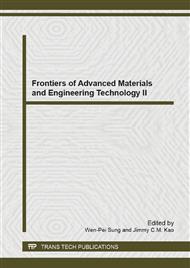p.486
p.490
p.495
p.500
p.505
p.509
p.513
p.519
p.523
Study on High Oxidation Rate Refractory Ore of Lanping
Abstract:
Lanping County of Yunnan has a difficult used ore of high oxidation rate lead-zinc, lead mainly include cerusite, followed by galena, a small amount of phosphorus (arsenic) lead and lead chloride (iron) alum; Zinc mainly include hemimorphite,a small amount of sphalerite. grade of lead is 6.83% , zinc 4.95% , lead oxide ratio is 91.74%, zinc 98.76%, so the ore is a high oxidation rate of refractory lead-zinc.Through extensive testing, ultimately used flotation process.Through the closed-process,lead concentrate’s grade is 44.98%, zinc 1.95% , recovery of lead is 72.62%;zinc’s concentrate grade is 21.20%, lead 2.50%, zinc’s recovery is 69.53%, the experiment has a good result.
Info:
Periodical:
Pages:
505-508
Citation:
Online since:
April 2014
Authors:
Keywords:
Price:
Сopyright:
© 2014 Trans Tech Publications Ltd. All Rights Reserved
Share:
Citation:


